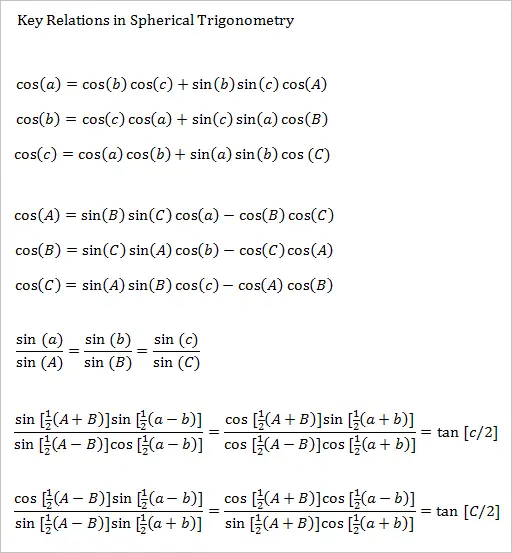Spherical Trigonometry Calculator
Jump to Spherical Trigonometry Calculator
A spherical triangle is the region enclosed by three great circular arcs on a sphere. The planes on which these great circle lie intersect at the center of the sphere, creating three angles in the sphere's interior, known as the subtending angles. The dihedral angles of these planes correspond to the angles on the surface of the sphere, known as the spherical angles. Subtending angles are denoted by a, b, and c, while spherical angles are denoted by A, B, and C. Angle a is opposite of angle A, b is opposite of B, and c is opposite of C.
Unlike angles in planar triangles, which must add up to 180°, the angles of a spherical triangle do not always add up to the same number. Thus, there are many non-congruent equilateral spherical triangles and right-angled isosceles spherical triangles.
A spherical triangle's area is (A + B + C - π)r², where r is the radius of the sphere and A, B, and C are measured in radians. If you know 3 of the 6 fundamental angles, you can use spherical trigonometry to solve for the remaining 3 angles, the area of the spherical triangle, the area of the planar triangle formed by the 3 corners of the spherical triangle, as well as the volume of the tetrahedron formed by the 3 corners and the center of the sphere. You can also use the calculator below.

Spherical Trigonometry Formulas
If you know at least three of the 6 angles in a spherical triangle, you can use trigonometric relations to solve for the unknown angles. In the formulas below, A, B, and C are the spherical angles, while a, b, and c are the subtending angles.
© Had2Know 2010
